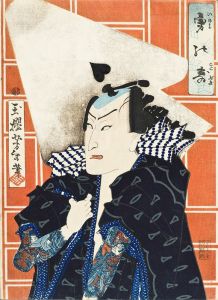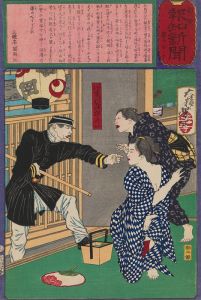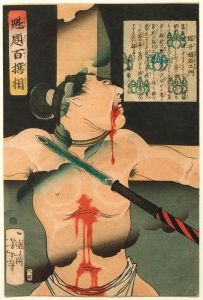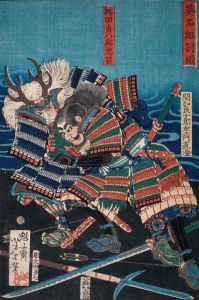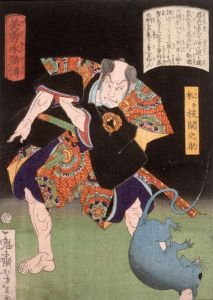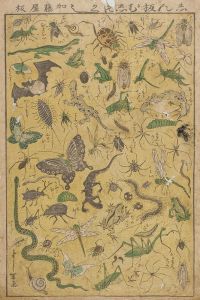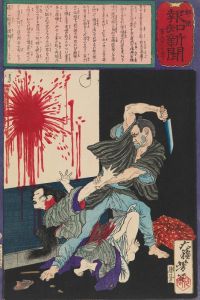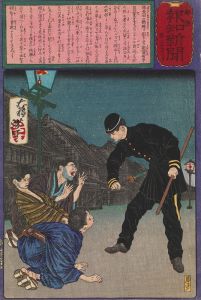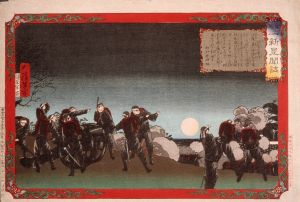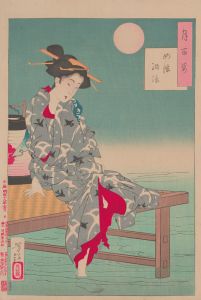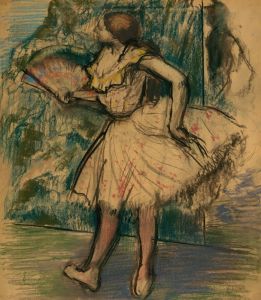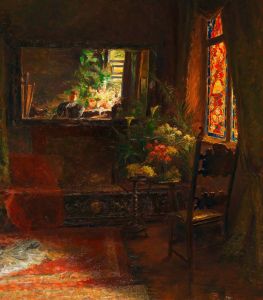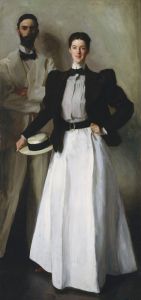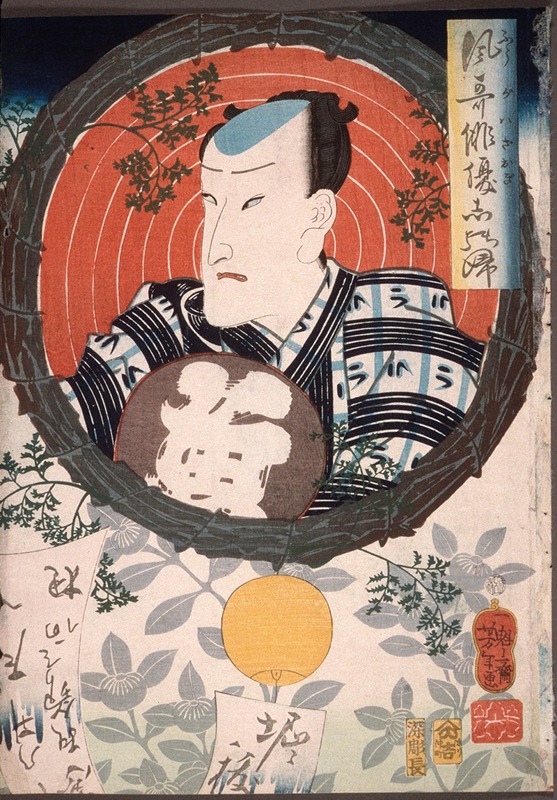
Ichimura Kakitsu Holding an Inscribed Fan
A hand-painted replica of Tsukioka Yoshitoshi’s masterpiece Ichimura Kakitsu Holding an Inscribed Fan, meticulously crafted by professional artists to capture the true essence of the original. Each piece is created with museum-quality canvas and rare mineral pigments, carefully painted by experienced artists with delicate brushstrokes and rich, layered colors to perfectly recreate the texture of the original artwork. Unlike machine-printed reproductions, this hand-painted version brings the painting to life, infused with the artist’s emotions and skill in every stroke. Whether for personal collection or home decoration, it instantly elevates the artistic atmosphere of any space.
Ichimura Kakitsu Holding an Inscribed Fan is a woodblock print by the renowned Japanese artist Tsukioka Yoshitoshi, who is celebrated for his innovative contributions to the ukiyo-e genre during the late Edo and early Meiji periods. Yoshitoshi, born in 1839 and passing in 1892, is often considered one of the last great masters of ukiyo-e, a genre of art that flourished in Japan from the 17th through the 19th centuries. His works are known for their dynamic compositions, vivid use of color, and often dramatic or emotive subject matter.
This particular print, Ichimura Kakitsu Holding an Inscribed Fan, is part of Yoshitoshi's larger body of work that frequently depicted actors, historical figures, and scenes from Japanese folklore and history. The print showcases the actor Ichimura Kakitsu, a prominent kabuki actor of the time, known for his performances in various dramatic roles. Kabuki, a classical Japanese dance-drama, is known for its stylized performances, elaborate costumes, and the use of makeup to transform actors into their characters.
In the print, Ichimura Kakitsu is depicted holding an inscribed fan, a common prop in kabuki theater that often carries symbolic meaning or is used to convey aspects of the character being portrayed. Fans in Japanese art and theater can signify a range of emotions or themes, from elegance and sophistication to mystery and intrigue. The inscription on the fan in this print may relate to the character Kakitsu is portraying or could be a reference to a specific play or scene.
Yoshitoshi's work is characterized by its attention to detail and the ability to capture the essence of his subjects, whether they are actors, warriors, or supernatural beings. His prints often reflect a deep understanding of human emotion and drama, which is evident in the expressive portrayal of Ichimura Kakitsu. The use of color and line in the print would have been carefully considered to enhance the visual impact and convey the desired mood or atmosphere.
During Yoshitoshi's lifetime, the ukiyo-e tradition was undergoing significant changes, influenced by the opening of Japan to the West and the subsequent modernization of Japanese society. Despite these changes, Yoshitoshi remained committed to the traditional techniques of woodblock printing while also incorporating new ideas and styles into his work. His prints are noted for their innovative compositions and the way they bridge the gap between traditional Japanese art and the emerging modern aesthetic.
Ichimura Kakitsu Holding an Inscribed Fan is a testament to Yoshitoshi's skill as an artist and his ability to capture the cultural and artistic spirit of his time. The print not only serves as a representation of kabuki theater and its actors but also reflects the broader cultural shifts occurring in Japan during the late 19th century. Today, Yoshitoshi's works are highly regarded and continue to be studied and appreciated for their artistic and historical significance.





